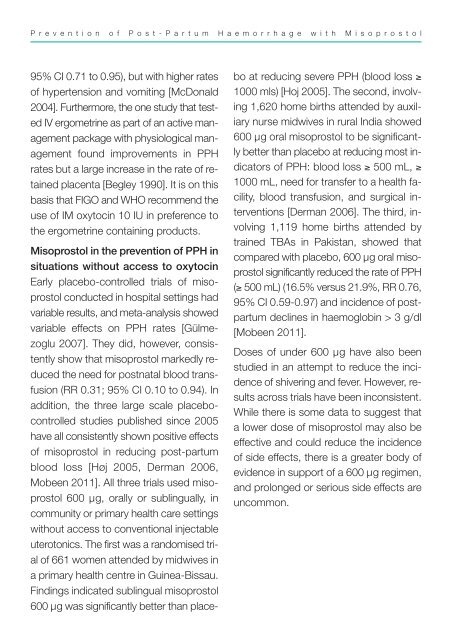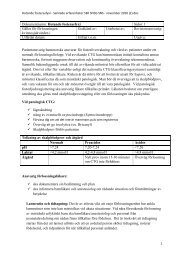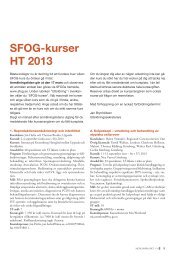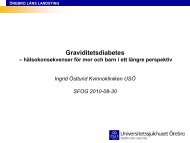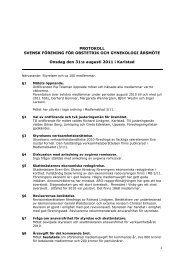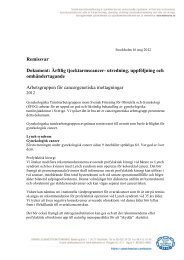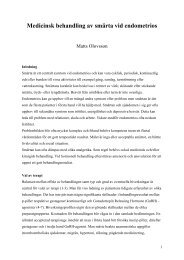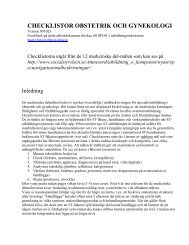Prevention of Post-Partum Haemorrhage with Misoprostol
Prevention of Post-Partum Haemorrhage with Misoprostol
Prevention of Post-Partum Haemorrhage with Misoprostol
Create successful ePaper yourself
Turn your PDF publications into a flip-book with our unique Google optimized e-Paper software.
P r e v e n t i o n o f P o s t - P a r t u m H a e m o r r h a g e w i t h M i s o p r o s t o l<br />
95% CI 0.71 to 0.95), but <strong>with</strong> higher rates<br />
<strong>of</strong> hypertension and vomiting [McDonald<br />
2004]. Furthermore, the one study that tested<br />
IV ergometrine as part <strong>of</strong> an active management<br />
package <strong>with</strong> physiological management<br />
found improvements in PPH<br />
rates but a large increase in the rate <strong>of</strong> retained<br />
placenta [Begley 1990]. It is on this<br />
basis that FIGO and WHO recommend the<br />
use <strong>of</strong> IM oxytocin 10 IU in preference to<br />
the ergometrine containing products.<br />
<strong>Misoprostol</strong> in the prevention <strong>of</strong> PPH in<br />
situations <strong>with</strong>out access to oxytocin<br />
Early placebo-controlled trials <strong>of</strong> misoprostol<br />
conducted in hospital settings had<br />
variable results, and meta-analysis showed<br />
variable effects on PPH rates [Gülmezoglu<br />
2007]. They did, however, consistently<br />
show that misoprostol markedly reduced<br />
the need for postnatal blood transfusion<br />
(RR 0.31; 95% CI 0.10 to 0.94). In<br />
addition, the three large scale placebocontrolled<br />
studies published since 2005<br />
have all consistently shown positive effects<br />
<strong>of</strong> misoprostol in reducing post-partum<br />
blood loss [Høj 2005, Derman 2006,<br />
Mobeen 2011]. All three trials used misoprostol<br />
600 µg, orally or sublingually, in<br />
community or primary health care settings<br />
<strong>with</strong>out access to conventional injectable<br />
uterotonics. The first was a randomised trial<br />
<strong>of</strong> 661 women attended by midwives in<br />
a primary health centre in Guinea-Bissau.<br />
Findings indicated sublingual misoprostol<br />
600 µg was significantly better than placebo<br />
at reducing severe PPH (blood loss ≥<br />
1000 mls) [Hoj 2005]. The second, involving<br />
1,620 home births attended by auxiliary<br />
nurse midwives in rural India showed<br />
600 µg oral misoprostol to be significantly<br />
better than placebo at reducing most indicators<br />
<strong>of</strong> PPH: blood loss ≥ 500 mL, ≥<br />
1000 mL, need for transfer to a health facility,<br />
blood transfusion, and surgical interventions<br />
[Derman 2006]. The third, involving<br />
1,119 home births attended by<br />
trained TBAs in Pakistan, showed that<br />
compared <strong>with</strong> placebo, 600 µg oral misoprostol<br />
significantly reduced the rate <strong>of</strong> PPH<br />
(≥ 500 mL) (16.5% versus 21.9%, RR 0.76,<br />
95% CI 0.59-0.97) and incidence <strong>of</strong> postpartum<br />
declines in haemoglobin > 3 g/dl<br />
[Mobeen 2011].<br />
Doses <strong>of</strong> under 600 µg have also been<br />
studied in an attempt to reduce the incidence<br />
<strong>of</strong> shivering and fever. However, results<br />
across trials have been inconsistent.<br />
While there is some data to suggest that<br />
a lower dose <strong>of</strong> misoprostol may also be<br />
effective and could reduce the incidence<br />
<strong>of</strong> side effects, there is a greater body <strong>of</strong><br />
evidence in support <strong>of</strong> a 600 µg regimen,<br />
and prolonged or serious side effects are<br />
uncommon.


